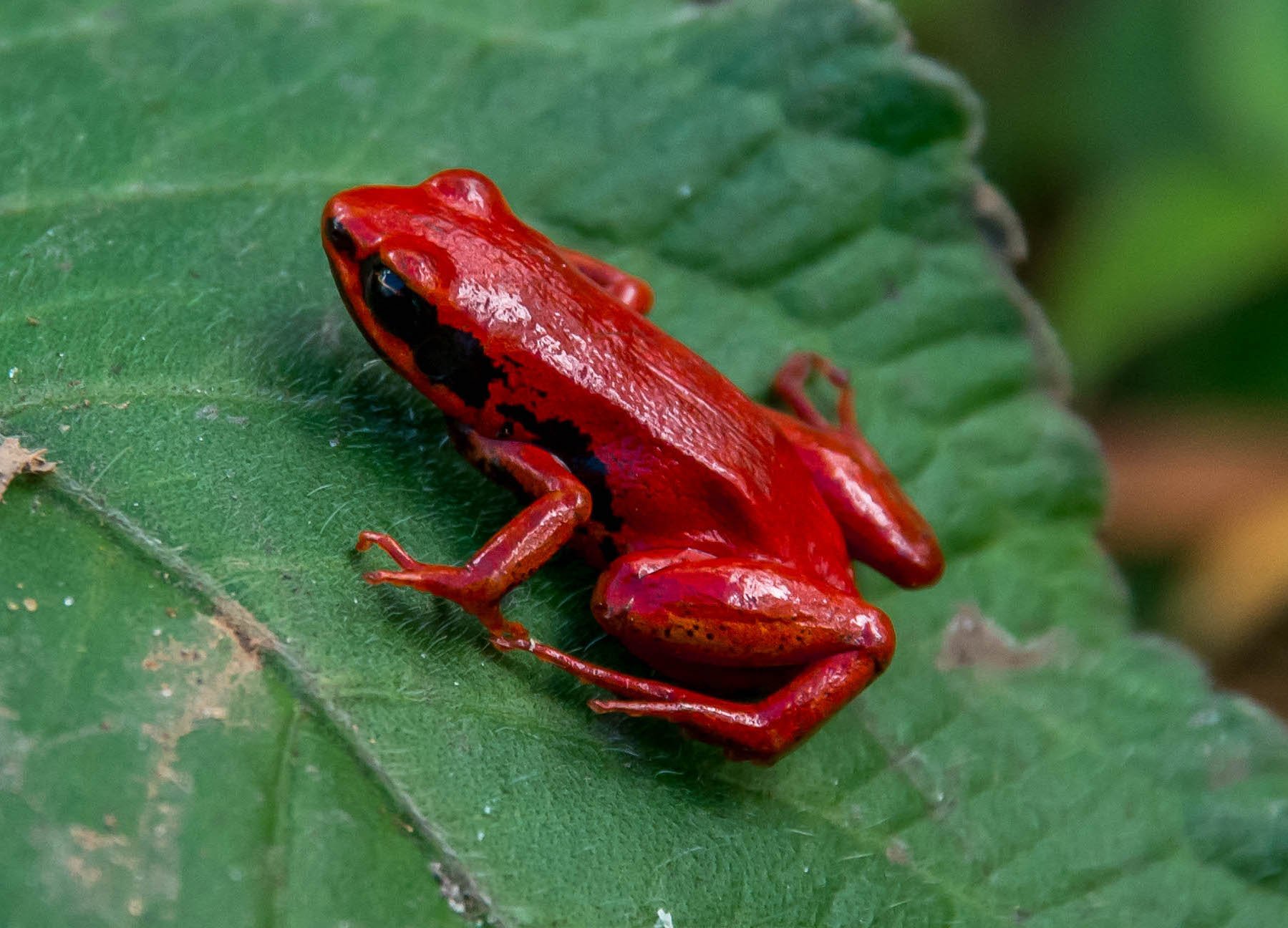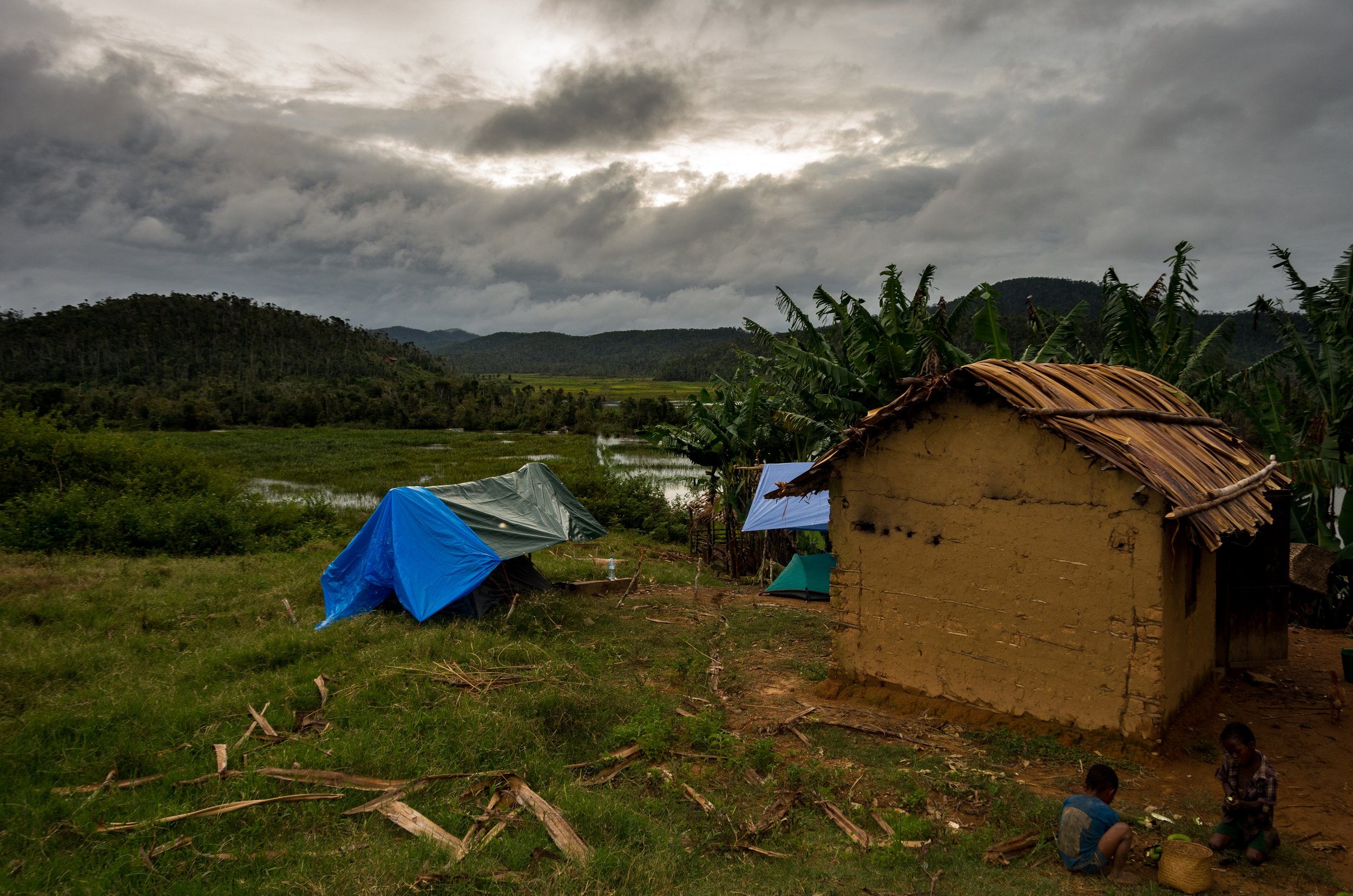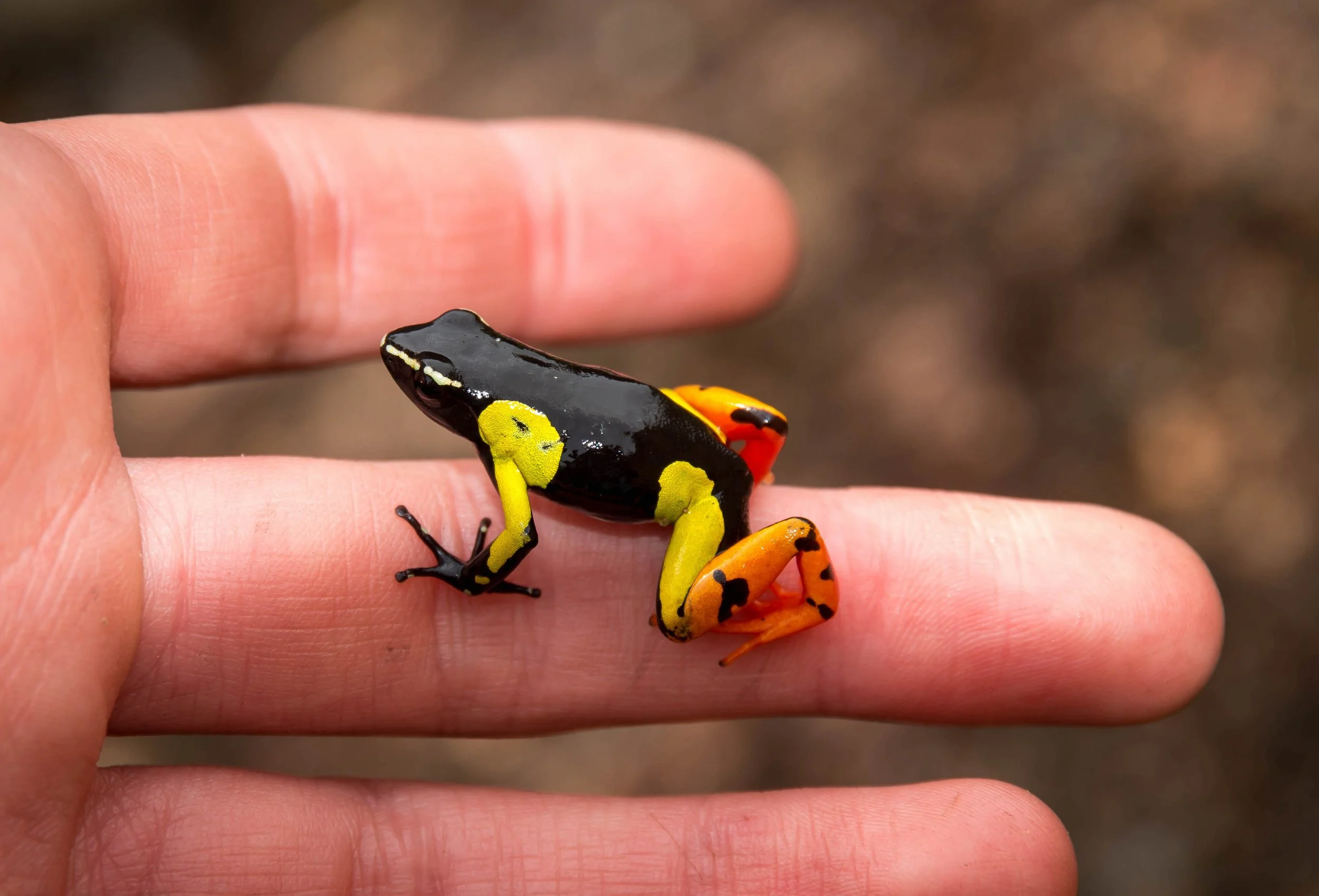


My research focuses on Malagasy poison frogs, a group of brightly colored, toxic frogs found only in Madagascar. Malagasy poison frogs are aposematic, meaning that their conspicuous coloration functions as a signal to warn predators of their toxicity. Aposematism is both a complex adaptation and a powerful defense mechanism.
Unfortunately, several species of Malagasy poison frog are vulnerable to extinction. Malagasy poison frogs are primarily threatened by habitat destruction, a consequence of the rampant deforestation that is occurring in Madagascar. Because of the magnitude and rate of deforestation, there is little continuous forest left in Madagascar. Much of the wildlife, including poison frogs, struggles to survive in the increasingly small and isolated patches of forest that remain.
Despite their status as endangered, very little is known about Malagasy poison frogs. For my dissertation research, I sampled frog populations throughout central-eastern Madagascar to learn more about their genetics, coloration, and toxicity. By collecting tissue samples for genetic analysis, I was able to investigate how frog populations – isolated in small forest fragments throughout Madagascar – are genetically related to each other. By quantifying color and pattern and analyzing it in combination with genetic data, I was able to examine whether differences in color and pattern were associated with differences in genetics. By collecting frog toxins (or “poisons”) and information on frog color and pattern, I was able to better understand the frogs’ defense mechanism.
My research provides critical information that helps conservationists effectively prioritize species and populations to ensure that maximum amounts of biodiversity are preserved.
Collecting toxic skin compounds (or “poisons”) from frogs in the field
A figure from my research paper describing evidence of hybrid frogs (“Admixed Individuals”), or offspring produced from mating between two different species (“B” and “C”)

Traveling to field sites was often logistically challenging

Field "accommodations" typically encompassed tents with tarps over them to provide additional protection from the rain

Finding - and catching - frogs the size of a nickel was no easy feat


